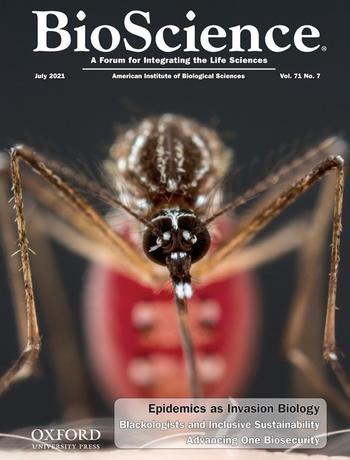Viewing emerging human infectious epidemics through the lens of invasion biology
Vilà, M.; Dunn, A.M.; Essl, F.; Gómez-Díaz, E.; Hulme, P.E.; Jeschke, J.M.; Núñez, M.A.; Ostfeld, R.S.; Pauchard, A.; Ricciardi, A.; Gallardo, B. – 2021
Invasion biology examines species originated elsewhere and moved with the help of humans, and those species’ impacts on biodiversity, ecosystem services, and human well-being. In a globalized world, the emergence and spread of many human infectious pathogens are quintessential biological invasion events. Some macroscopic invasive species themselves contribute to the emergence and transmission of human infectious agents. We review conceptual parallels and differences between human epidemics and biological invasions by animals and plants. Fundamental concepts in invasion biology regarding the interplay of propagule pressure, species traits, biotic interactions, eco-evolutionary experience, and ecosystem disturbances can help to explain transitions between stages of epidemic spread. As a result, many forecasting and management tools used to address epidemics could be applied to biological invasions and vice versa. Therefore, we advocate for increasing cross-fertilization between the two disciplines to improve prediction, prevention, treatment, and mitigation of invasive species and infectious disease outbreaks, including pandemics.
author = {VilÀ, Montserrat and Dunn, Alison M and Essl, Franz and GÓmez-DÍaz, Elena and Hulme, Philip E and Jeschke, Jonathan M and NÚÑez, MartÍn A and Ostfeld, Richard S and Pauchard, AnÍbal and Ricciardi, Anthony and Gallardo, Belinda},
title = "{Viewing Emerging Human Infectious Epidemics through the Lens of Invasion Biology}",
journal = {BioScience},
volume = {71},
number = {7},
pages = {722-740},
year = {2021},
month = {05},
abstract = "{Invasion biology examines species originated elsewhere and moved with the help of humans, and those species’ impacts on biodiversity, ecosystem services, and human well-being. In a globalized world, the emergence and spread of many human infectious pathogens are quintessential biological invasion events. Some macroscopic invasive species themselves contribute to the emergence and transmission of human infectious agents. We review conceptual parallels and differences between human epidemics and biological invasions by animals and plants. Fundamental concepts in invasion biology regarding the interplay of propagule pressure, species traits, biotic interactions, eco-evolutionary experience, and ecosystem disturbances can help to explain transitions between stages of epidemic spread. As a result, many forecasting and management tools used to address epidemics could be applied to biological invasions and vice versa. Therefore, we advocate for increasing cross-fertilization between the two disciplines to improve prediction, prevention, treatment, and mitigation of invasive species and infectious disease outbreaks, including pandemics.}",
issn = {0006-3568},
doi = {10.1093/biosci/biab047},
url = {https://doi.org/10.1093/biosci/biab047},
eprint = {https://academic.oup.com/bioscience/article-pdf/71/7/722/38876431/biab047.pdf},
}

